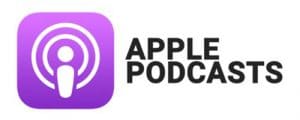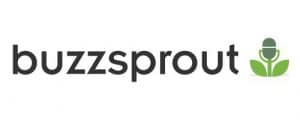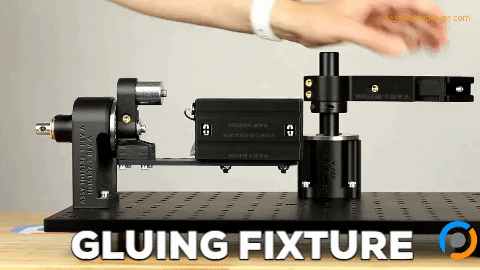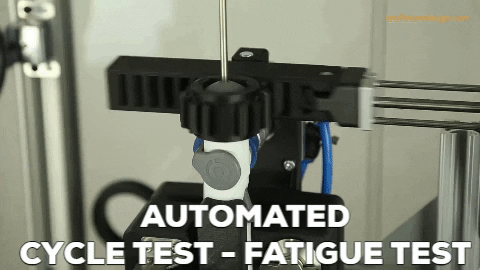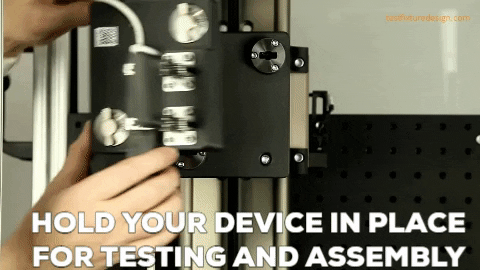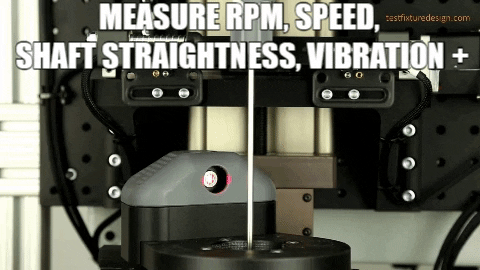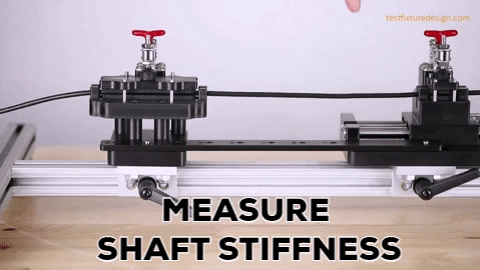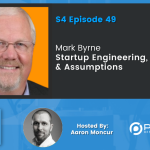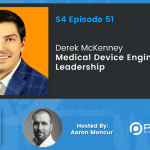S4E48 Paul McEnroe | Inventing the Barcode (UPC) & Scanner

Who is Paul McEnroe?
Paul McEnroe is the primary inventor of the universal product code (UPC for short), or better known as the barcode. Paul is also the co-inventor of the handheld “pistol-grip” scanner that reads barcodes at a distance, as well as several other technologies following these.
EXPAND TO VIEW EPISODE TRANSCRIPTION
SUMMARY KEYWORDS
barcode, code, ibm, supermarket, people, numbers, put, engineer, mba, bars, company, scan, big, engineering, debate, store, paul, soup, cash register, product
SPEAKERS
Aaron Moncur, Paul McEnroe
Aaron Moncur 00:01
Getting custom manufactured parts can be a difficult task. Some local shops are great, but some require order minimum torque just won’t pick up the phone if you aren’t a large company. That’s where Xometry comes in. Xometry is trusted by engineers and designers at NASA, BMW Bosch, and more. Simply upload the design file you want to be manufactured and boom, in a matter of seconds, you’ll get an instant quote and access to dozens of manufacturing processes like CNC machining, cheap cutting and fabrication, 3d printing, injection molding, and more. Plus, you’ll have plenty of delivery window options and prices available to suit your budget, worry less and get the parts you need manufactured with xometry so you can get back to building. Xometry where big ideas are built.
Paul McEnroe 00:51
Under the book, I thought it was very important right under the title, I put how a team as the big word created one of the world’s most ubiquitous technologies. So it’s it’s teamwork, and really add to that.
Aaron Moncur 01:19
Hello, and welcome to the being an engineer Podcast. Today we’re speaking with Paul McEnroe, who is the primary inventor of the Universal Product Code, or UPC for short, better known as the barcode. Paul is also the CO inventor of the handheld pistol grip scanner that reads barcodes at a distance as well as several other technologies. Following these, Paul, welcome to the show.
Paul McEnroe 01:43
Thank you very much. My pleasure.
Aaron Moncur 01:47
Well, how did you decide to become an engineer?
Paul McEnroe 01:51
Well, it’s a very interesting question, I actually wanted to go into business or law. And so I ended up deciding on the business part of it. At least that’s what I was talking about when I was like a sophomore junior in high school. And I went and talked to a number of successful people in my area, and so on and so forth. And they said, Oh, if you just go study business, you know, nobody’s going to hire you to do anything significant. Go get a degree in electrical engineering. And after you do that, you’ll get something they’ll hire you for, and you can get started. And then later, go get yourself an MBA. So that’s kind of the path I went down. But after studying engineering for four years, I got nice offers to continue with more studies, you know, with all expenses paid. So I did that. But I did finally go back. And I spent a few years at Stanford getting the equivalent of a of an MBA in, in business.
Aaron Moncur 02:55
Terrific. Do you feel like the MBA helped you a lot as an engineer or in your career, whether it was doing engineering directly, or as you got into? I don’t
Paul McEnroe 03:06
think it really helped like it is you’re nearing per se, but I ended up going into management. In fact, I was already in management by the time I went to Stanford, and for business, because I did engineering there first and then went over into the VIS school. And so it did help me a lot with my career, I think, I think, you know, and I will never know, but I think that the fact I was in business had something to do with why they chose me as a candidate to start them in a new business because that’s how I got into this barcode thing. In the first place. IBM wanted to expand their technologies increased into little different areas, areas that were peripheral to base, centerline mainframe computers. And so they, they were looking for somebody to do that. And they picked me and I think it has something to do with in fact, a, I was living in Silicon Valley, where a lot of that startup stuff was happening, and I had just was in the middle of or toward the end of my work into physical.
Aaron Moncur 04:24
We’re gonna get into the barcode story deeply, for sure. Before we go there, I’d like to talk a little bit more about the MBA. I’ve talked with a lot of people who have MBAs and I’m curious to hear from your perspective, you mentioned that you think it really did help you in your career. Perhaps that’s why you were chosen to start this this barcode venture. Were there other areas or other experiences you can point to and say that specifically I was able to do because I had an MBA
Paul McEnroe 05:00
Yeah, it’s hard to say specifically, I was able to do it because of the NBA that couldn’t have done it if I didn’t. You know, it has something to do with how you think and the way you go about things and so on, you know, I would, I would almost say it’s a little bit off the track, but I’ll come back to the MBA, I would almost say that in high school. And in college, I went to college, at the University of Dayton, which was near the home where I lived, and I did it because I could afford it because it was very inexpensive at the time, $12 or credit hours, those days, and you know, so 20 credit hours plus the $240 a semester, and I have worked on campus, because Wright Patterson Air Force Base, had electrical research you could do, and you could do it right there in between your classes. So that helped me a lot. But what helped me so much that I was referring to, is in both high school and college, I joined the college debate team. And, you know, the way that well, we have a lot of people are familiar with it, but the way it works is the the people that run debating across the country, pick a topic of, you know, national interest. And that’s controversial, and nobody can decide which side is really right. And then that is the topic for the year. So you do a whole bunch of research on that topic. And then you go, you travel around to different schools, for example, even though I was at Dayton, we traveled to Harvard and debated them and other schools up down the east coast. And they, you go into the room, there’s a judge and you know, you have tables, you stand up and debate team from the other school, only five minutes before the debate starts, do you get to find out whether you’re going to be in favor of it or against it, you have to draw straws. And so you learn to stand up on your feet. And of course, the other people you don’t know what they’re gonna say they may have done different research. And so you have to stand up on your feet and argue in front of an audience and you’ve got judges doing it. And interestingly enough, in that whole time, I did that, and I was captaining the University of Dayton debate team for three years, and I was on it for and in high school for two or three more. I never ever met, of course, this would apply to the college thing. Another engineer, in debating, they were all this thing, all they, they were English majors, there were, you know, different kinds of business majors, international businesses, now they are they, there were no engineers. And so I think that experience really did help me. You know, I mean, if you’re doing engineering, you have to stand up and explain it to somebody who’s got the funding or the resources or the, or the management team, to, to keep it going. And you have to explain it to him, and you have to explain it to him, you know, not with decimals and fractions and equations, you got to explain, you know, what it’s going to mean to the people who are gonna use it, what’s gonna mean to him, how much money he’s gonna make from, et cetera, et cetera. And I think that really helps. And when I went to the Bisco at Stanford, by the way, that experience really helped me. And then immensely in the business school where she helped him Rector school too. So I majored in in getting my MBA I majored in finance and marketing. And so, you know, those are good fields to have a background in and a knowledge of because that way you can, you could talk to your treasurer of your company in pros and cons, and, and all of that. So yeah, that that really does help out. And especially you’re trying to get something funded, either because you worked in a company or because you need to go to venture capital and talk to them. So I think that really helped me a lot. It opened doors. I don’t know that I couldn’t have done what I did. If I had not done it won’t go quite that far. But I think it made it easier. Yeah,
Aaron Moncur 09:28
I I think that debate, that’s it. That’s a huge pro tip right there. You don’t hear that from many people. But I always say that communication is the route to success, right? You can only go so far with really good technical skill, you need to have really good communication skills, the soft skills, and what a great way to learn about communication.
Paul McEnroe 09:50
There’s a little side story if you if you’d like that it at Stanford. So one of the courses I took was business law, and they had a very professional Very famous professor who was retiring soon. And he was already a professor emeritus in the law and business school at Stanford, which was number one or two in the country at the time. And it’s so his class was so popular that they had to hold it in a big auditorium where there were hundreds of students. And so that’s where we were, that wasn’t typical of Stanford at the time, but just because of this particular professor. So he would assign, you know, cases for you to prepare on one day, and then the next day you came in, and you’re supposed to be prepared to discuss that case. So that he would say, at the beginning of the class, okay, who would like to take the case for the plaintiff, and, you know, one or two hands would go up on a 300, always mind. And then after he picks up on he would say, who would like to take the case for the defense? Well, my hand would go up again. And one or two others out of 300 Make a long story short, over the course of the semester, or the quarter, whatever was was quarters. I think at that time, and I spoke, you know, 10 times as often as anybody else. I mean, I didn’t do it every day, but a lot, a lot. And so there was just one exam and the classes final exam. And he came out, and he told us all about the final exam, we’re all going to come and take the final exam. And then he said, but I have one comment. And he said Mr. McEnroe, who has debated me, and by the way, the way these debates went, I would take one of those cases, either one. And then he would take the other case, and so you had to debate him, you know, he was the he was the other attorney. And so if you took the defense case, he presented the plate, if you’d present the defense, then, you know, he would, you know, just make you look stupid, by you know, is brilliant. So of course, he was familiar with the cases, he wrote most of them. And so then he said, Would you like to change it? You’d say yes, of course it so that he would take the opposite case that you had just failed to win with. And he would be brilliant at that. And then you would repeat his case, but then, you know, he had the arguments against that. So you know, you always lost, but I debated him in front of these 300 people, probably half or two thirds of the meetings of the class sessions. So right before the end of the class, he says, I have one announcement. And that is, he said Mr. McEnroe will not be required to take the final exam, and he will get an eighth of the course or less anybody spoke. So the final exam.
Aaron Moncur 12:49
That’s terrific.
Paul McEnroe 12:53
Even though I lost every debate I have here because I was debating him, but he won everyone.
Aaron Moncur 12:57
Yeah, well, I bet you gained a lot from that, right? Just repetition, the practice over and over. I was listening to something I can’t remember who was bad. It was it might have been the Beatles, but they were this book was the author of the book was talking about how, whatever band this was, and I think I think it was the Beatles wasn’t very good to begin with. But they would play so much. You know, when when when most bands would be, you know, once or twice a week, this band was every single night right from, you know, 10pm to three in the morning or whatever, every single night playing. And it was that practice and repetition that that really made them the superstars that they became not this like inherent skill that they just were born with. It was it was practice and hard work. Right, exactly. All right, Paul, well, let’s get into the barcode, which is a big deal, right? Everyone knows what a barcode is. I mean, aside from some, you know, maybe tribes in the Amazon forest, pretty much everyone in the world knows what a barcode is. That’s, that’s huge. That’s how does that how does that make you feel, knowing that you have engineered something that the entire world uses? Yeah,
Paul McEnroe 14:12
it’s, it’s mind boggling. I don’t think about it all that often. I do enjoy going to the grocery store. And I’m the shopper in the family. And I go there probably twice a week, sometimes three times. And, you know, I’m on a first name basis with all the people in the little lab. Well, in the Albertsons store that I go to is the standard size store. It local, the only supermarket in my local town. And yeah, I I’m friends with the store manager and all the checkout clerks and I give them a bad time when they pick up the scanner that I patented to scan things and then you know, they give me a real bad time if something doesn’t work, right.
Aaron Moncur 14:51
Oh, that’s great.
Paul McEnroe 14:54
And, but you know, I don’t think about it too much other than that, to be honest with you You know, you just you just go on. And, you know, I’m just very fortunate that something that I worked on happen to, you know, be I was there at the right time at the right place with the right technology. And, you know, it all went together, they went big. So
Aaron Moncur 15:16
what was the problem that drove development of the barcode? What, what was life? Like before the barcode in that context?
Paul McEnroe 15:23
Yeah, well, in back in the supermarket or in the retail stores, you know, everybody was just hand changing prices on the merchandise can of Campbell’s Soup. You know, in the old days, if you went to a store, and you went to the soup aisle, and you wanted to buy a can of soup, you know, I mean, I was taught well, okay, if you look at the, to the back of the of the of the shelf, you’ll probably find a cheaper can of soup because they hadn’t bothered to pull all his cans out and reprice them. And that was a little trick that people did. That was one way it was different. They ran out of stuff a lot, because the only way they could tell whether they had or not was walk back and forth, up and down the aisles, and that go hand order it, and so on and so forth. And the checkout lines were long, and because and by the way, when you got checked out, you you couldn’t tell what you paid for different things. I mean, unless you happen to be watching at the moment when they keyed in the price, because the checkout clerk had to pick up the item twisted around to see where the price was. And then key the price in the cash register. And by key to price, like if it was 13. Such they keep one three, you know, and then another thing, and then they went on to the next one, and so on. So that’s the way it was. And that problem had been articulated very well by the supermarket Institute. And by the commercial, so called rags magazines of the day that were describing Gee, we’d like all these things to be different. Now, so that was happening in supermarkets and retail, it was a little different, you know, in your stores like Macy’s and Sears, and so on and so forth. They were had lots of problems, reordering and inventory control and price management, all that kind of stuff. They didn’t have so much of a problem at that in terms of speed of checkout, which was predominant in supermarket area. So that was happening. And that had been written down. People had tried to do these things. One of the more well, well, one of the primary competitors to the code that we developed was a bullseye code that had been developed by a guy who later joined my team, Joe woodland back in 1948. But they couldn’t scan it effectively or reliably. There were problems with the code, we couldn’t scan it reliably ourselves, even with new technology, because the code didn’t work well. And in terms of eliminating errors. But in addition to that, another problem was there was no good light source that would allow scanning of it in the 1940s 50s and early 60s. But then, I had started at IBM in 1960. And I was had been working in a think tank in Los Gatos, California, which is the Bay Area, Silicon Valley. And I’ve been been working there for about nine years doing different types of research, input output things, mostly scanning was my specialty. And so I was doing that. And one day into into my office walk, a gentleman named Jack Keeler, later to become president of IBM, and but he was just a more junior executive at the time. And he said, Hey, Paul, we have a proposition to put in front of you. And he said that they would like me to pull together an effort to study different possible fields of endeavor to decide maybe what we should go forward with, to expand IBM’s product line so that we could get continue our growth. So then he went on to tell me that the President and CEO of IBM at the time gentleman named Frank Curie, very famous, one of the most famous ones had decided that IBM is growth which was so phenomenal that by the way, if it had continued it would have passed the gross national product. I mean, if it continued at the same rate, which of course is a contradiction and an impossibility. So that couldn’t have happened, but but if you just put The numbers and that’s what would have happened without using any logic anyway. So he said, We need to expand the things that bring data to the mainframes into the back room into the computers, and so on and so forth, and so on. Why don’t you guys, he’s talking to his staff, go out to Silicon Valley, buy some nice companies that are working in these peripheral areas. And let’s get started with startups in IBM. And they said, No, Frank, you just don’t understand. Every top notch engineer who can do whatever they want, and work wherever they want. On the morning, after you say, you’re going to buy the company, they will quit. And they don’t want the IBM white shirts and blue suits and wingtips. And, you know, also, of course, IBM didn’t have the same kind of compensation plan, you know, I mean, they, the stock plans weren’t, you weren’t gonna get rich quick, you know, you make a good living and ever a very secure future. But you know, it’s not a startup. And so, Frank said, Okay, this is what Jack told me, Jack, you have got to keep in my office, he said, Okay, then do the next best thing and find somebody in IBM to do a sort of a pseudo startup, you know, so what we would do is, you know, get some people at IBM and try to treat them, like as if they were a startup because he knew you couldn’t follow all of the red tape and rules of getting an IBM product out the door, and be successful in a startup kind of a mode. So this would have to be treated differently. And so that’s what they asked me to do. And so like I said, I think the reasons that they did were in part, there I was in Silicon Valley. So I was used to that. I’d been around for about nine years, I had expertise, that input output in computers, I don’t think they paid attention to the fact that was scanning or not. And so I think that’s had something to do with why they knocked on my door. And so then I got two helpers in IBM, one older, more experienced guy in manufacturing and engineering, and a second guy, a brilliant young mind, who had an MBA from Harvard, and a bachelor’s in engineering from MIT. But he never really worked in engineering. It just Yoder stood at all. But he hadn’t had done anything. So anyway, we started that up. And we got to look at the different fields of that were out there thinking of how can we grow the computer field. And first thing we looked at was banking. And we decided, okay, we liked the way that was opening up and the way applications that we could have developed. But there was already a group I found out that had started that in IBM, and I didn’t like conflict with them and have another internal war. So that pushed that aside. And then we looked at point of sale. And there I thought being go, I had grown up in Dayton, Ohio, in the shadow of NCR. And that’s their headquarters. And all most of their factory was in Dayton, Ohio. And they, they were the biggest employer there, outside of General Motors, who was humongous. And so I was familiar with their product. And everybody was is a big old cash register, right? Cast iron, the whole keyboard, big long throws two, three inches on the throw of the key. And then white letters, black and white, come popping up through a glass window until you what the price is for that item, and so on and so forth. And of course, there were little keyboards that had been used in the truck stance as well. But in conjunction with the cash register with, you know, the cash drawers and all that stuff. And IB and NCR had a monopoly almost on the whole on around the world. You know, almost every store in the world had an NCR cash register. So the market was already laid out there was you know, supermarket stores, retail stores, they all had national cash register devices, and it probably 95%. So I thought that’s what we can go after. And then I was studying their materials, by their materials, I mean, the industry materials, where they were calling for faster checkout, automatic scanning, inventory control, etc, etc. And I’m thinking, hey, we can do all that stuff. I was a scanning person. We can do that. We can And, you know, I knew that the light problem had been a problem for scanning before. But I also knew and had worked with him in the laboratories that the helium neon laser had just been developed. And that was a low cost, I thought safe device that we could use in the scanner. And, and then there were a whole host of other things that we could do. And it fit IBM because it was required a systems solution, you got the barcode, or we didn’t have barcode yet, but you have some kind of a symbol. And you’re going to read the symbol. So you got to have computer equipment, you got to transmit the signal from wherever you’re going to scan it to the back room, and then the warehouse, and then the headquarters and so on, you got a lot of communications, and you’ve got to put a lot of stuff on the file. And if we started studying stores, and there were Costco, like stores in Europe, all over Europe at the time, they were called Cash and Carry, they had 40 checks, and some of them and the front of the store, and great big warehouse type situations in the back, people would go in there and shop once a once a month or once every two weeks or something. But still, you got 40 People at the front of the store, and they’re going to scan something, then instantly 40 different signals could go back to this computer in the back room, and it had to answer all of them before any of them could tell there was any delay. Well, that was beyond the speed of capability of inexpensive communication systems and of the file systems. So you need it knew that. And if you take the price off the merchandise, then you got to have no fail computer, because there’s no other way to get the price to put it in. Because there’s no prices on anything, except on the on the shelf, and you can’t run back to the shelf and look at the price of something every time the person has a different item. So anyway, I could see the systems requirements for this. And I could see that we could do all of that stuff. So we went ahead and propose that we develop a new system come up with some kind of assemble, we didn’t know what kind of assemble that we could scan and propose it. So we did that and put a proposal in front of IBM executives, they bought it, I asked for a modest amount of money it was it was $300,000, the first year, million dollars, the second year, 3 million the third year. And after that, we’d have to have a lot more but or we be fired. It’d be a failure. So that’s what we did. And we would propose that we start that kind of thing. And we were accepted and went ahead with a proposal. And that was 1969.
Aaron Moncur 27:57
Terrific. Terrific. So tell us a little bit about how barcodes work I mean, we have all these little vertical lines next to each other different spacing. How does it work? Yeah.
Paul McEnroe 28:09
So you, you scan that is to say like, if you were to read it with your eye, your eye scans, let’s say from left to right across, and you can see in some bars are fatter than others, and then they have a white space in between them. And the next bar, the white spaces are difference in width, too. And so if you do a little calculation, mathematical analysis, and using binary technology, of course, you can just with two bars and two spaces, you can get all the digits, plus have some spare ability to do error checking, and so on and so forth. And so yeah, we just break it down. So if you look at the barcode on anything now, a typical barcode, the kind we proposed, and we offered different options of it, you could cut it in half, you could make it smaller, blah, blah, blah. But the standard barcode had five numbers originally on the left hand side and five numbers on the right hand side and three longer black bars in the middle. And some bars to start extra that didn’t have a number below them. Well above each of those numbers, just you take two bars and two spaces, and that’s going to be the code for that number. So there’s so the number one might, I can’t remember what it is but it might be you know, a wide black by followed by a narrow white followed by another wide black followed by another wide white, you know something like that whatever they were. And so you just you have to create since you don’t have the eye of a human being a small spot when the spot has to be smaller than the bar so that the spot is completely absorbed by the black when it’s in the black, but reflects back off the white when it moves on to the white. Now, I need something very important here that I think caused us to be a success and other people not to win was that the typical way everybody did that, or almost everybody was they measure the width of a black bar, that little spot coming across, everybody has a little spot, and then they compare it to the white space next to it. But for the first five to eight years, the bars had to be printed cheaply in store on a very inexpensive machine printer, and then stuck on the package. And those machines typically had too much ink or not enough ink, it wasn’t the quality that you get if craft is putting it on their package or post is putting it on Wheaties or whatever, which is very high quality. So if you imagine that the printers got too much ink in it, and it’s printing is black bar, and you’re going to measure and compare the width of the black bar to the width of the white space next to it. If all if the printer has too much ink in it, all the black bars are going to get too fat too wide, and all the narrow spaces are going to get too small. And so when you divide the width of the black bar, you get a big number on the top, and you’re dividing it by the whitespace, which is a small number. And that’s getting smaller because there’s too much ink and the error compounds tremendously. And you just get garbage. And vice versa. If the printer didn’t have enough ink, all the white spaces get too wide and the black spaces get too thin. One way that we build on this just one of about 10 different, really magnanimous things there are about the details of the code is we said, hey, we’re not going to do it that way that we’re going to measure the leading edge of the first black bar to the leading edge of the next bar, whether it’s next black bar, and we’re going to take the trailing edge of that first black bar and measure the distance to the trailing edge of the next black bar. Now, it’s the same information, the same kind of information, same amount of information, but it’s done in a different way. And the errors cancel. Because if all the bars are fatter, all the left sides move left. And if there’s not enough ink, they all move. Right. And so the errors cancel. And so that’s one of the little tricks about our code that was different from everybody else’s code. And so that’s the way reading the bars work. And by the way, so there are,
Aaron Moncur 32:56
are there like an unlimited number of, I guess numbers that a bar code can represent, I guess you just add more bars and spaces to create a bigger number. It’s not run out of them.
Paul McEnroe 33:07
That’s right. But the standard now I think that the most that I’ve seen are six that you can get six numbers there, they have another number hidden in the leading bars, the tray, the three bars on the far left are the three bars on the far right. And that’s has a country code in it. So you know, you get the country code. So if it’s China, you know, okay, it’s that one. And then if it’s the United States, it’s another one. So, yes, and, and that’s what the barcode is really good at it, you know, just 10 digits now. In the early days, the retail people, the Macy’s of the world, they wanted not 10 characters, numbers, the supermarket just wanted 10 digits and just the 10 digits. They didn’t want letters, the retail people wanted. They wanted numbers and letters. And they wanted 36 of them. Because they wanted to put on their little tag on the merchandise. Who was the designer? What was the designers name? You know, What color was it and they didn’t want you to just the standard colors, they wanted colors that you know, the ladies are more likely to want like chartreuse or something, you know, not green. And so, for them, we use the same code, the same code in terms of how it was written and everything. But we did it recorded it magnetically so that you could put the numbers or the characters closer together because you get a lot smaller, if you like dimensions between the markings for characters in magnetics then you could at the time, then you could in optics and up. So that’s kind of the way it went. So we proposed the code to the national retail Merchants Association. And to the supermarket Institute, it was the same code, but one was encoded magnetically on a magnetic stripe, like on the back of your credit card. And that was stuck on a sheet of paper and attached to the merchandise for retail. And then for supermarket and fast food stores, you know, later claimed to be key marks and so on, it was just the barcode, which just had the 10 digits, or 12, if you like, what happens
Aaron Moncur 35:34
when you run out of numbers did he get, I don’t think
Paul McEnroe 35:38
a lot of numbers, if you think about it, you know, with five numbers, you could get 99,000 different, you know, nine or 99 different numbers. And that’s more than there are items at a supermarket. And then all the so that’s just one side of the label, or one side of the barcode, the other side, it has another five or six and that does the manufacturers. And as I said, buried in the bars on either the far left or the far right is the country code. So you got a country code, and then you’ve got these, these numbers sets. And so call it 100,000. It’s one less than 100,000. So there are less than 100,000 companies that are building grocery items in every country, and there’s less than 100,000 items in the in the supermarkets as well. So it hasn’t been a problem. Now, for applications where you want a lot of information, new information, you know, not 50 years ago, but now, then the QR code is an expansion of the barcode that we did. And it’s a two dimensional code. So you know, you can also scan the thing, in addition to the left to right, you could stay at it top to bottom, or bottom to top as well as left to right, and you see the little dots in there, and you can make the dots smaller, and so on and so forth. So you can get almost arbitrarily as much information as you want. So nowadays, you know, it’s it’s something you want that’s inexpensive, very fast to read. Everybody’s used to it, everybody puts it on, it’s very standard. It’s inexpensive, easy, cheap, and real fast scanning. And you don’t have to orient it, the barcode is wins that battle, and it’s won it for 50 years. And it’s going to keep winning it for another 20 or so. But if you want to put something special on that, you’re going to get a lot more details to like you want to put a sticker I’m looking at my computer here. And it’s got a QR code on a sticker on the that I’ve never taken off with more than the base right below the keys. And so you probably scan that, and it’ll tell you where the where you can buy the manual and all that kind of stuff. So that’s what a QR code is for. But the barcode, you know, does its job where you can get by with the number of digits you got. And of course, if you just have one more digit, then you multiply by 10. So where I was talking about 100,000, then it becomes a million. So
Aaron Moncur 38:25
let’s let’s go back to the the numbers, because I have another question there. So does that suggest that barcode numbers live within their own unique ecosystems, for example, a grocery grocery store ABC is going to have their own barcode number system, whereas grocery store XYZ is going to have a completely separate system, even if they are selling the same products. Nowhere and it doesn’t
Paul McEnroe 38:50
go by the grocery stores. It does go by the manufacturer of the foods. So let’s take Campbell’s chicken noodle soup, right. So okay, Campbell’s Soup is going to have a code, right? They just have one code, let’s say have a they might have Okay, different factories and so on. But the that’s just simplified and say they have one coat. So that’s, that’s the the number to the left is Campbell’s Soup. Okay. Now, the numbers to the right, so they got 99,000 opportunities. So they pick one, they pick a number, let’s say they pick the number 127 00127. And they assign that to chicken noodle soup with low sodium, medium size. And that number goes on then that will be the same for all Campbell’s soups, go into whatever supermarket they go to. Okay, okay,
Aaron Moncur 39:45
so forgive me. I’m a little slow. Sometimes I’m starting to get there, but I’m not quite there yet. So if there are only 100,000 unique numbers, I mean, surely there are more than 100,000 products in the world that are using barcodes. How does how does that work? Well,
Paul McEnroe 40:02
but there’s only it got to be 100,000 from Campbell’s Soup, right? Because Campbell’s soups is that, you know, they had their choice of however many numbers they want over there. And then, so we have an institute, it used to be called the, well, I’ve forgotten the name of it now. But the G is one that assigns the codes. And so, you know, people haven’t really been complaining about running out of codes. So, you know, they assign Campbell’s soup, and then Campbell’s can say, okay, let’s say we make 50 Different kinds of soup. Okay, so they get 50 numbers for their soup, and they might get 50 more numbers for something else. And so, but those are just only get used up by Campbell’s. Now, you know, you could go to another manufacturer, so
Aaron Moncur 40:51
the manufacturer has some unique code that defines the manufacture and sale aside,
Paul McEnroe 40:58
let’s just take, I’m not sure what’s left of the right. But if you look at a code use, you see two sets of numbers, right, five on the left and five on the right. So one side is for the manufacturer.
Aaron Moncur 41:10
Okay, so that infers that there are not more than 100,000 manufacturers use these raw codes. Okay, in that country, right in that country. Okay, yeah.
Paul McEnroe 41:21
And then we expanded it to six. So now, it’s that there are less than a million. God the guy started it was 100,000.
Aaron Moncur 41:28
Okay, interesting. I’ve wondered how that’s worked for a long time. So this is really interesting to hear it.
Paul McEnroe 41:35
Yeah. So So what the different stores, they could do different things with it, so they can program our equipment. So this the the Campbell Soup doesn’t want to have to worry about where are the cans of soup is going to go, whether it’s going to go to Kroger’s, or whether it’s gonna go to Albertsons, right? They just want to make the soup, right, they don’t have to worry about where it goes. So they ship the soup, it’s got the same barcode on it everywhere in the United States, okay, either on the country that and they’ll deal with the country code. But in the United States, they would have just one number for one unique can of soup.
Aaron Moncur 42:10
I have or my company, we have purchased UPC seeds for products that we have developed, right, we’ll design the pack of the product, and then we’ll design the packaging for it as well. And we’ll put a barcode on there will go off to I can’t remember the website that we’ve used in the past, but there’s somewhere you can go and buy a UPC and then you can get that, you know, PDF file or AI file, whatever
Paul McEnroe 42:35
I see when it when we build it, it was started with it, it was called the uniform Product Code Council in Washington. So
Aaron Moncur 42:40
that’s the organization that manages GS one and GS two and what, what are the economics of that, you know, we’re all using these barcodes, they’re all these companies out there, less than a million that have their own unique code, someone has to manage that
Paul McEnroe 42:53
Market Institute, the supermarket Institute recognize that, you know, and they set all that up, and they did a magnificent job. So they set it up. And that organization has continued to this day. And it’s, yep, like you said, if you have a company, you call in you, you get assigned a number, and then you have this made her products as you have and you get assigned the numbers for those products. And that will work. And then if you say you want to sell it in some other country, well, then you’ll have they’ll give you another number.
Aaron Moncur 43:27
Fascinating. So do are the manufacturers paying to have this unique code that’s specific to them? Is that how that Yeah,
Paul McEnroe 43:35
yeah. But it’s a very minor amount, you know, in the scheme of things. Yeah. It’s mostly cost based, you know, I mean, I’m not certain whether it’s a nonprofit or whether it is but you know, the the companies that pass it on, I never paid attention to that. But it’s it’s a minor expense. In all the years I’ve been involved with it that I’ve never heard a complaint of anybody about. It’s too hard to get a number or too expensive to get a number. Lucia I haven’t Yeah.
Aaron Moncur 44:07
Yeah, I was just curious about how that all worked in the background. I interviewed someone on the podcast a while back who worked at Battelle. And if I remember correctly, he had indicated that they worked on barcode or barcode scanner, maybe it was tangentially Was there some kind of partnership with Battelle or am I just completely misremembering? Well, they were
Paul McEnroe 44:31
involved. So the way it works, is the supermarket Institute now we’re skipping away from the national retail thing which used to magnetics just a supermarket side. So the supermarket Institute you know, they they set up these code people to hand the code out, but before that, they formed an ad hoc committee. They formed it in 1970 I believe and Uh, that was to select the code, they made several decisions, which were phenomenal. One of them was that they would not entertain any code to be selected, unless it was put in the public domain, they didn’t want to set up anybody to get rich on this, you got to put it into public domain, you got to be willing, that any money you make on it is going to be to provide manufactured products that supermarkets would buy to put in the store, you know, like the scanners, and so on and so forth. So that was one thing. The second thing was they realized, and this was brilliant of them, that they did not have the skill set to decide which is the best coat Do you know, I mean, they couldn’t even understand how does it work? You know, I mean, they don’t have that kind of engineering. And so they went to the number one consulting company for this kind of thing in the world at that time, I believe, McKinsey and Company in the back East. And they hired McKinsey. And McKinsey put two top notch people in charge of the selection. And so they worked with the ad hoc committee. And the ad hoc committee said, Let’s go invite manufacturers who would be interested in getting into the field of providing products for the supermarket’s that we can buy to put in there to do the scanning and to do the inventory control and everything. Let’s invite them to propose of symbols that would be scanned. And so they did. And they said, Well, you know, we’re not going to be able to pick the best symbol. So we’re going to get McKenzie to do it. So McKinsey did it. And so McKenzie, suggested to the supermarket institute that together, they hired different people to do testing. One of those was Patel. And so that is how l was involved from my memory. And so we got it all. We sent them product, they tested it, and so on and so forth.
Aaron Moncur 47:04
So fascinating hearing about the history.
Paul McEnroe 47:07
Yeah, I didn’t, I didn’t see the results of their tests of other products, because that was proprietary. But I did see their results of ours. And, you know, it was good. And what, when, when, when our product was selected, very interesting. The I was told that this is all covered in the book, one of the guys from McKinsey came out of the room where the ad hoc committee was meeting to do the selection, and said, I’m sorry, Paul, he said, it’s clear you guys have the best code and the most reliable code and most error free code. But I don’t think they’re going to be able to select it because they’re worried that if they select Big Blue, that was the nickname for IBM at the time, if they select IBM’s code, there going to be too much social back pressure that they just went with the biggest, most expensive company in the world. We’re the largest company in the world for point of view of profitability and value of our stock, and so on, so forth. And so he’s I don’t think they’re gonna be able to select your code, even though it’s far away to vest. And I said, Look, I said, and I had no authority to do what I’m telling you right now I did. But I didn’t have the authority at the time, I said, I could see that I was gonna lose all the work we had done, because now I told you, I started on this in 69, they formed the ad hoc committee in 1970. But now it’s 73. And it’s like the end of March 1 of April of 73. So four years of work has already gone into this. We’ve got the code that we published, all the stuff on it, et cetera, et cetera, as other companies had to, but I can see all that going down the drain, because they don’t want to go with big blue because of, you know, the feelings everybody would have, they just went with the biggest company. So I said, you know, just before I came to the meeting, my team showed me a couple of minor improvements that they’ve made to the code. Let me tell you what those improvements are. You can make those improvements to the code that will make it different. And you can say, that’s your code. You don’t have to say you selected the IBM code. And he said, well as the launch, try it, you’ve walked back into the room. It came back out some time later, and said they bought it. And in the book i i printed a copy of the page in the BusinessWeek magazine April 7 1973. That shows pictures of the finalists of the code of which there were seven and the code they selected. Which quote is different than all seven different than ours. But you can’t tell the difference. Our readers still read it, we didn’t even have to modify them at all, because they were just only thing we did is, we had previously had the little bars on the left in the right go up above the ones in the middle, and we just cut them off at the top. That was one of the changes. I even forget what the other one was, was very, very minor. But that way, they didn’t say they’ve selected IBM’s code. And by the way, that Businessweek article made fun of it. And it’s it said in there it said, you know, you look at the pictures of the codes. I don’t remember the exact words it was. But look at the pictures of the codes that you’ll see it looks exactly the same as the IBM code that was submitted. But they said it’s their own. And, wow,
Aaron Moncur 50:53
maybe that came from your MBA training, how quickly students change. All right. Well, Paul, this has been a great conversation. Thank you so much for joining me on the podcast today. I’ve got one more question for you before, before I let you go, specifically within the context of your role as an engineer, what is one thing that frustrates you? And conversely, one thing that brings you joy?
Paul McEnroe 51:22
Oh, boy. Well, I mean, it just in general, the things that frustrate us engineers, I think is where we see people making decisions in all kinds of social affairs that are just not supported by science. They’re just not, not the physics of the world that everybody knows. And that the that gets to be very frustrating to us. The thing that makes me happiest is, you know, looking around at the things that engineers of all different types have been able to do for society. And I think that I know, when I went to engineering school, I had a lot of professors that were very special. And they all kind of said, you know, yeah, you you measure what you do and how successful you’ve been, not by how much money you’ve made in this net, everything but more by what improvements have you made to the way people live their lives, and that makes them happier. And I think that’s what, you know, engineers can benefit the most Trotman. So some people do little things, some people do big things, whatever. We did kind of a little thing, but it had an effect on a lot of people. And that’s what I that’s what gives me the most joy is thinking of the numbers of people. We were thinking we get 10 billion scans a day, across the country. And the but you know, it’s ubiquitous, and the meaning of ubiquitous is in sometimes thought of as it’s so prevalent, you don’t notice it. We don’t notice barcodes, we don’t think about them all the time, because they are everywhere. And we see them all the time. And that’s the good part of it.
Aaron Moncur 53:25
Amazing, amazing. Well, Paul, tell us the title of your book and where people can find it. And if people want to get a hold of you, how can they do that?
Paul McEnroe 53:36
Sure. It’s called the bar code. And under, under the, under the book, I thought it was very important, right under the title, I put how a team as the big word, created one of the world’s most ubiquitous technologies. So it’s, it’s teamwork, and really add to that it’s available on Amazon and Barnes and Noble. And the, there’s going to be a hardcover version is, is on its way out. It’ll be there very soon. And it’s available in paperback and Kindle. Now, you can get it very quickly.
Aaron Moncur 54:16
And how about if people want to connect with you? How can they do that?
Paul McEnroe 54:20
Well, you know, they can you know, I think what I’m going to do is I’m going to get a website started because there’s so many people that want to get involved with me that haven’t done before. But right now, I mean, I think the best way is contact my publicist, which is Smith publicity, those are the people that you’ve been working with. And they can put them in touch with me but I think I’m going to get a I’m going to get a contact set up by some some website. I don’t have one yet, but I think that’s probably what else Do and they always go to Silicon Valley press, SVP, Silicon Valley press, it’s in Silicon Valley, you can Google them. And you can get in contact with me through them. That’s my publisher.
Aaron Moncur 55:15
Perfect, perfect. That brings up a good point. Often, the guests that we have on the podcast, including Paul are not people that we find but people who find us and and oftentimes, publicists like those that Paul mentioned, will reach out to us here at the being an engineer podcast and say, Hey, we’ve got this wonderful guest that we think would would provide some valuable content. And and we love that, you know, not everyone’s a good fit. And we don’t, we don’t charge anything for guests to come on the show. But if it is a good fit, then we love that. So if you’re listening to this, and you think to yourself, I know someone who would be a great guest on the podcast, someone who’s engineering or engineering adjacent, maybe has a great story to tell, absolutely reach out to us and and suggest this guest make an introduction. And if it’s a good fit, we’d love to have those individuals on the show. So I think that’s that’s it for this episode. Paul, thank you so much for joining us today and sharing your story with the barcode and sharing the barcode with literally the whole world.
Paul McEnroe 56:14
Yeah, you bet. Well, thank you. I’ve enjoyed it very much.
Aaron Moncur 56:17
I’m Aaron Moncur, founder of pipeline design, and engineering. If you liked what you heard today, please share the episode. To learn how your team can leverage our team’s expertise developing turnkey equipment, custom fixtures and automated machines and with product design, visit us at Team pipeline.us. Thanks for listening.
About Being An Engineer
The Being An Engineer podcast is a repository for industry knowledge and a tool through which engineers learn about and connect with relevant companies, technologies, people resources, and opportunities. We feature successful mechanical engineers and interview engineers who are passionate about their work and who made a great impact on the engineering community.
The Being An Engineer podcast is brought to you by Pipeline Design & Engineering. Pipeline partners with medical & other device engineering teams who need turnkey equipment such as cycle test machines, custom test fixtures, automation equipment, assembly jigs, inspection stations and more. You can find us on the web at www.teampipeline.us

